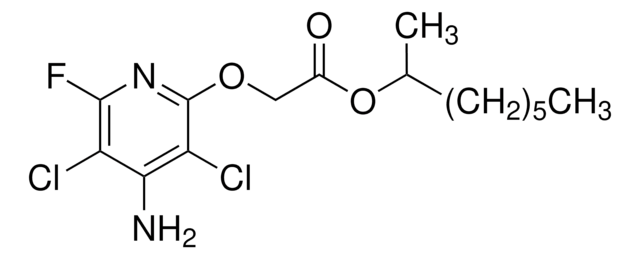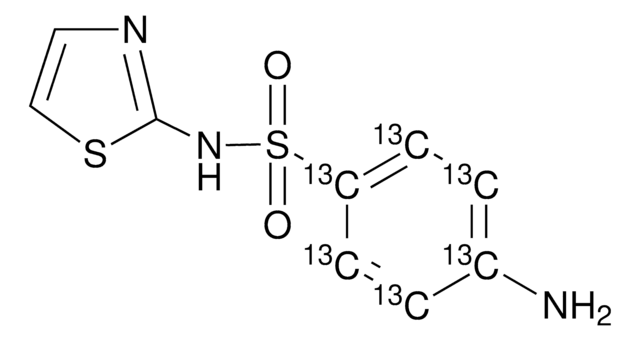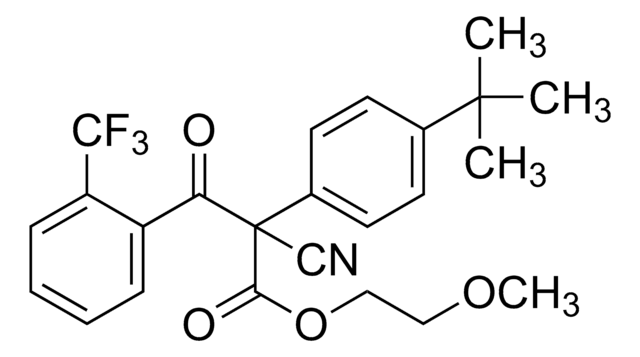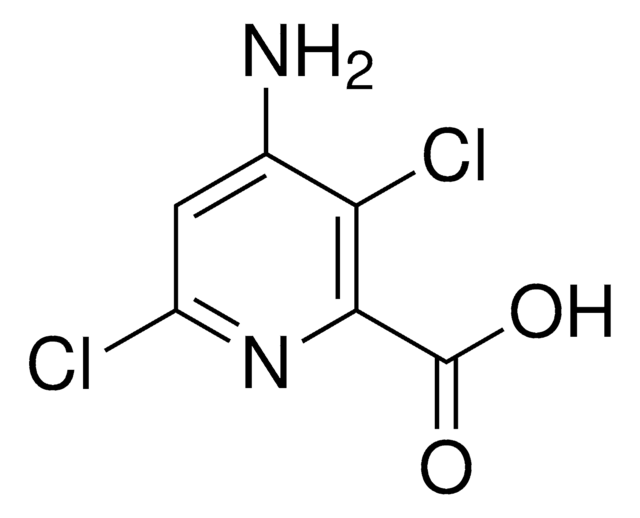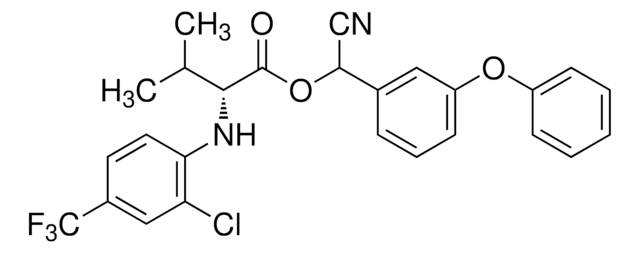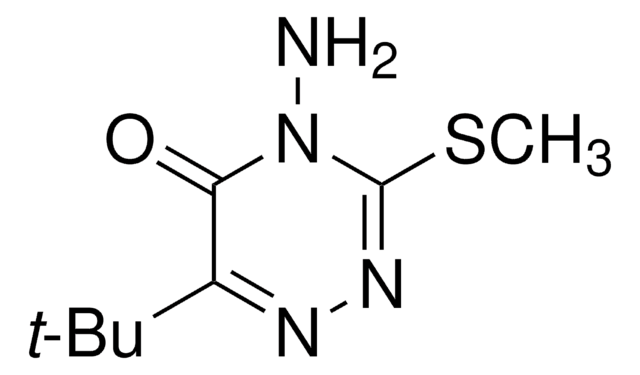Wichtige Dokumente
45758
Fluroxypyr
PESTANAL®, analytical standard
Synonym(e):
2-[(4-Amino-3,5-dichlor-6-fluor-2-pyridinyl)-oxy]-essigsäure, 4-Amino-3,5-dichlor-6-fluor-2-pyridyloxyessigsäure
About This Item
Empfohlene Produkte
Qualität
analytical standard
Produktlinie
PESTANAL®
Haltbarkeit
limited shelf life, expiry date on the label
Anwendung(en)
agriculture
environmental
Format
neat
SMILES String
Nc1c(Cl)c(F)nc(OCC(O)=O)c1Cl
InChI
1S/C7H5Cl2FN2O3/c8-3-5(11)4(9)7(12-6(3)10)15-1-2(13)14/h1H2,(H2,11,12)(H,13,14)
InChIKey
MEFQWPUMEMWTJP-UHFFFAOYSA-N
Suchen Sie nach ähnlichen Produkten? Aufrufen Leitfaden zum Produktvergleich
Verwandte Kategorien
Anwendung
- Impact of herbicide runoff: Research compares runoff losses and toxicity between residual and knockdown herbicides, including Fluroxypyr, when applied to sugarcane fields, demonstrating significant differences relative to traditional treatments such as Diuron. This study underscores the importance of selecting appropriate herbicide treatments for effective weed management while minimizing environmental impact (Silburn et al., 2023).
- Herbicide resistance and management: A study focused on Florasulam-resistant flixweed in North China highlights the potential role of alternative herbicides, including Fluroxypyr, for managing resistant weed populations. The research provides insights into herbicide selectivity and efficacy, aiding in the development of more effective weed management strategies (Wang et al., 2021).
- Herbicide pollution assessment: Utilizing a multi-dimensional approach, this study assesses herbicide pollution in catchment areas, discussing the implications of Fluroxypyr among other herbicides. It focuses on the ecological consequences of herbicide use and the necessity for accurate pollution assessment techniques to ensure environmental safety (Khan et al., 2020).
Rechtliche Hinweise
H-Sätze
P-Sätze
Gefahreneinstufungen
Aquatic Chronic 3
Lagerklassenschlüssel
11 - Combustible Solids
WGK
WGK 2
Flammpunkt (°F)
Not applicable
Flammpunkt (°C)
Not applicable
Persönliche Schutzausrüstung
Eyeshields, Faceshields, Gloves
Hier finden Sie alle aktuellen Versionen:
Analysenzertifikate (COA)
Die passende Version wird nicht angezeigt?
Wenn Sie eine bestimmte Version benötigen, können Sie anhand der Lot- oder Chargennummer nach einem spezifischen Zertifikat suchen.
Besitzen Sie dieses Produkt bereits?
In der Dokumentenbibliothek finden Sie die Dokumentation zu den Produkten, die Sie kürzlich erworben haben.
Kunden haben sich ebenfalls angesehen
Active Filters
Unser Team von Wissenschaftlern verfügt über Erfahrung in allen Forschungsbereichen einschließlich Life Science, Materialwissenschaften, chemischer Synthese, Chromatographie, Analytik und vielen mehr..
Setzen Sie sich mit dem technischen Dienst in Verbindung.